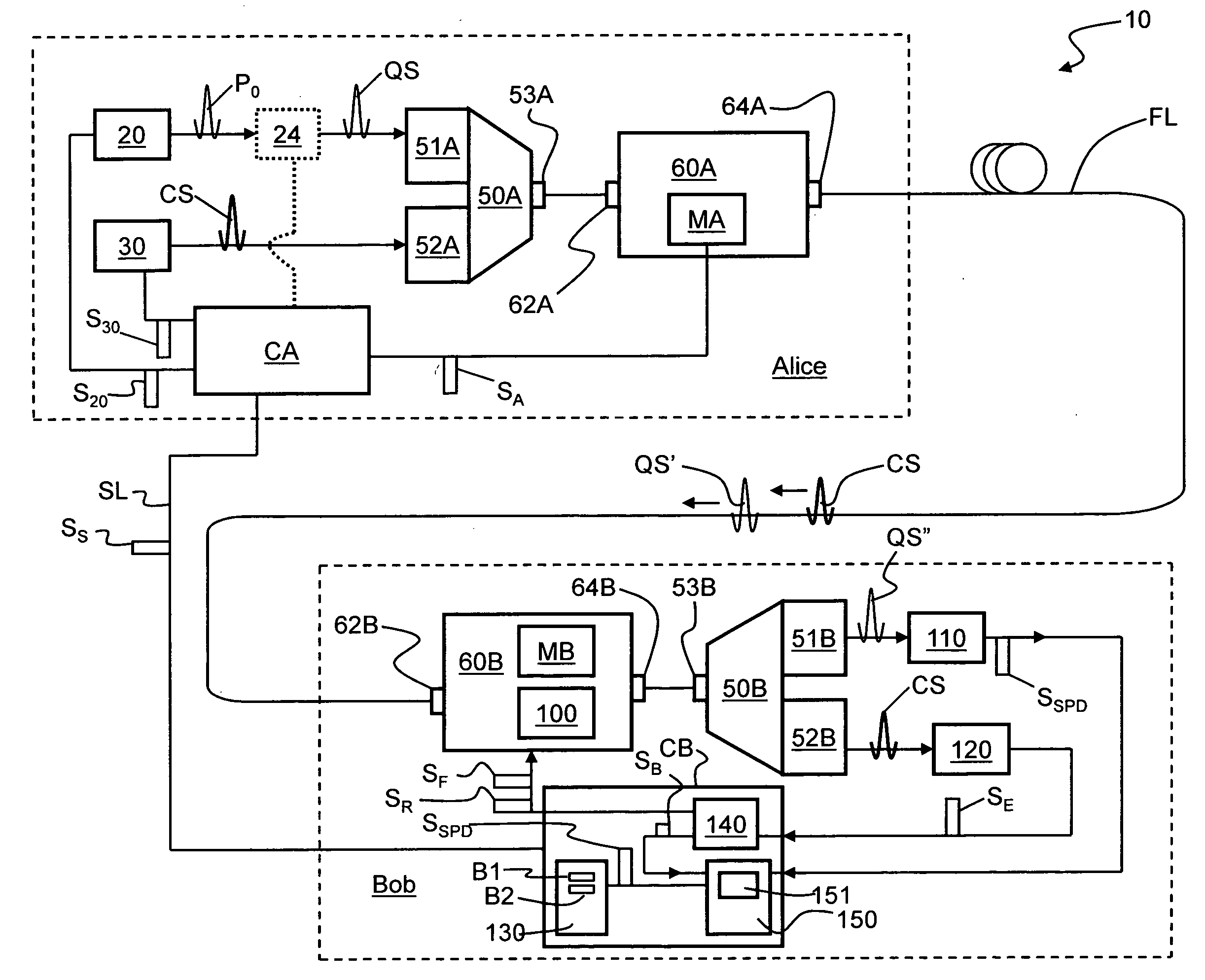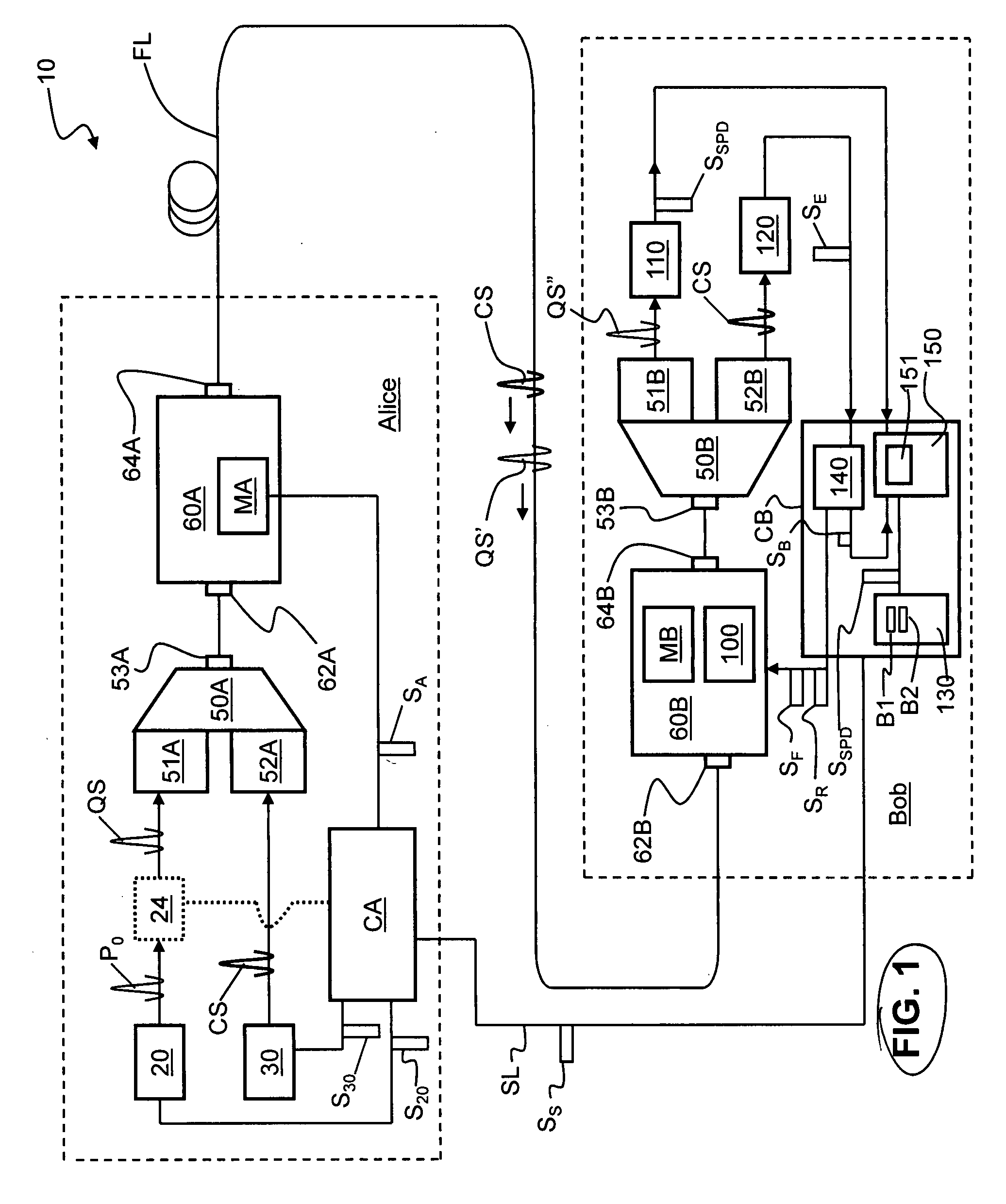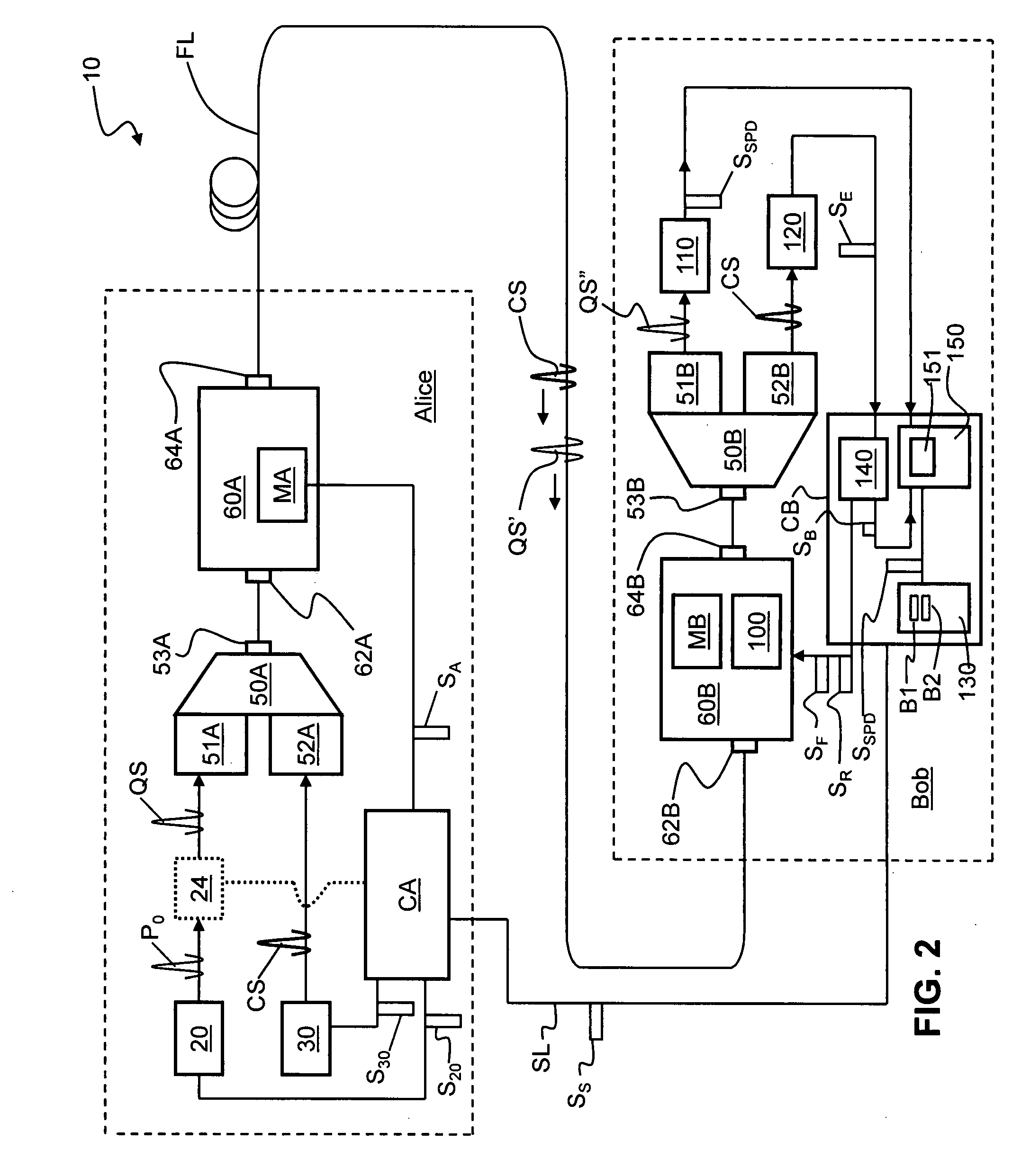Systems and methods for enhanced quantum key formation using an actively compensated QKD system
a quantum key and actively compensated technology, applied in the field of quantum cryptography, can solve problems such as reducing interference visibility, introducing errors that reveal her presence, and optical path length
- Summary
- Abstract
- Description
- Claims
- Application Information
AI Technical Summary
Benefits of technology
Problems solved by technology
Method used
Image
Examples
Embodiment Construction
[0015]FIG. 1 is a schematic diagram of an actively stabilized QKD system 10 according to the present invention. QKD system 10 includes a QKD station Alice and a QKD station Bob that are optically coupled. In the example embodiment of FIG. 1, Alice and Bob are optically coupled by an optical fiber link FL. Alice and Bob communicate by encoded single-photon-level quantum signals QS. The encoding may be any type of encoding that changes the state of the photon. Usually, polarization encoding or phase encoding is used, as described in Bouwmeester. The present invention applies to any type of encoding scheme and QKD system that requires active stabilization in order to maintain the qubit error rate (QBER) at an acceptable level. In an example embodiment, such active stabilization utilizes classical optical signals CS that have the same or similar wavelength as the quantum signal QS. For example, in a polarization-based QKD system, a polarized classical signal is sent over the optical fib...
PUM
 Login to View More
Login to View More Abstract
Description
Claims
Application Information
 Login to View More
Login to View More - R&D
- Intellectual Property
- Life Sciences
- Materials
- Tech Scout
- Unparalleled Data Quality
- Higher Quality Content
- 60% Fewer Hallucinations
Browse by: Latest US Patents, China's latest patents, Technical Efficacy Thesaurus, Application Domain, Technology Topic, Popular Technical Reports.
© 2025 PatSnap. All rights reserved.Legal|Privacy policy|Modern Slavery Act Transparency Statement|Sitemap|About US| Contact US: help@patsnap.com



